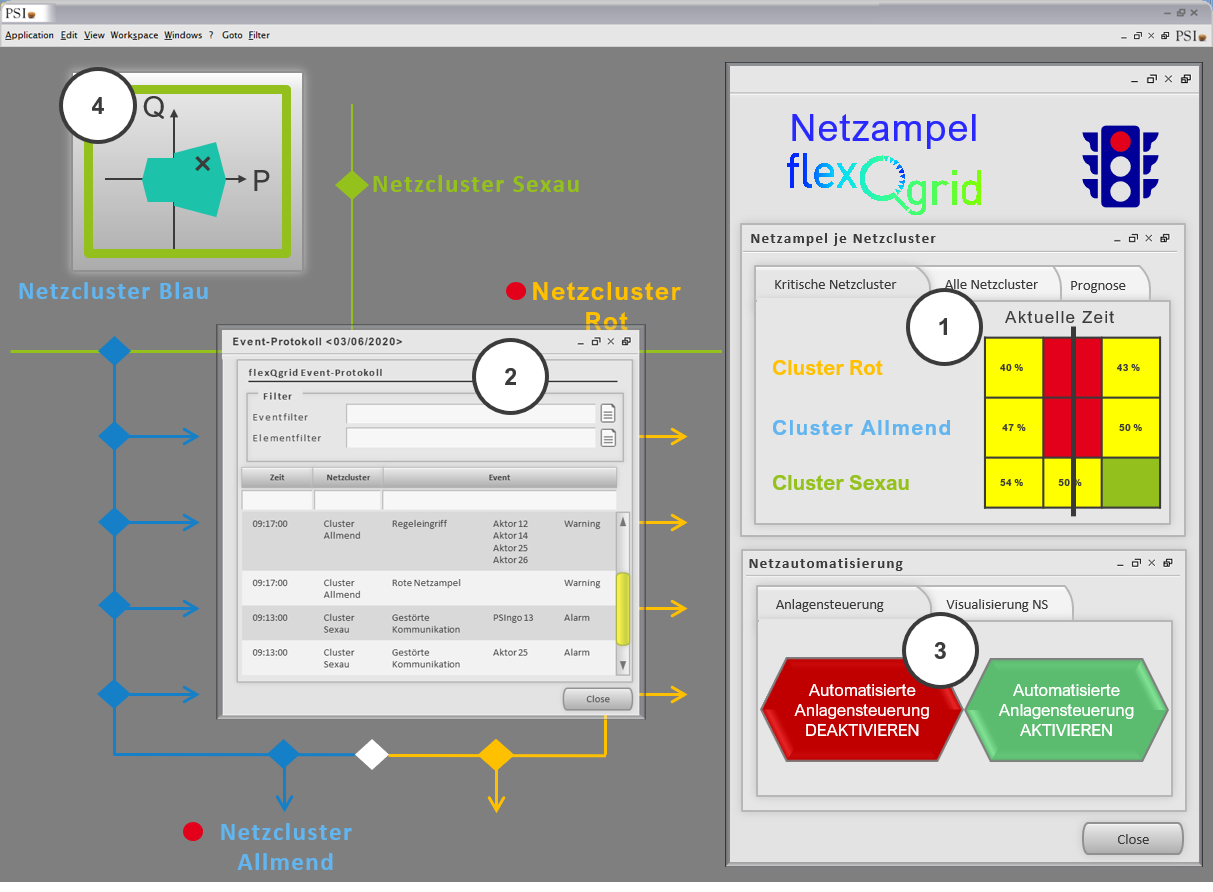The grid of the future is becoming real: In the flexQgrid research project, we are integrating technical innovations into real grid operation in order to master the challenges of the energy turnaround. These are caused in particular by the increase in renewable energies, which in contrast to conventional power plants feed electricity into the distribution grid in a decentralized manner, and from new consumers such as electromobility. In order to implement our solutions for these challenges in real grid operation, we take into account real conditions, real players, but also real demands on grid operation - reliability and security of supply.
Operators as important interface
The work of the operators in the control centers of Netze BW is essential for security of supply, as they maintain an overview of the grid status at all times. In doing so, they already prevent grid congestions, for example by carrying out switching operations or limiting the output of a wind farm as part of feed-in management. Due to the increase in decentralised generation units and new consumers (electromobility, heat pumps), this task is becoming increasingly complex and extensive.
Our vision in the flexQgrid project includes the coordination of decentralised and new actors and thus issues directly related to the distribution system operation. Therefore, we rely on the exchange with colleagues from the grid operation when developing our solutions. In this way, we ensure that our solutions are compatible with real operations and thus adapted to the needs, requirements and everyday life of our colleagues. The project partner PREdistribuce, as the distribution system operator of the City of Prague, also brings in the view of a municipal grid operator in other EU countries. We use this expertise to evaluate our solutions not only from the perspective of the Netze BW, but also to check their transferability to other framework conditions.
Avoid grid congestions transparently
Our aim in the project is the proactive avoidance of grid congestions in the distribution grid by means of the grid traffic light concept in combination with a quota model. Grid congestions are predicted in advance and avoided through the intelligent coordination of flexibilities. However, if acute congestions occur in real time, a decentralised system called PSIngo immediately detects the congestions and autonomously controls the systems in the distribution grid to solve the congestion. Due to the large number of systems, automation makes sense at this point, although automation is always associated with technical risks - both on the hardware and software side. For this reason, we create transparency about the actions of the systems and enable the control centre to intervene at any time.
To this end, the project partners Netze BW and PSI have jointly developed visualisation and user concepts for the employees of the control centres from November 2019 to March 2020. Afterwards, we discussed our solutions with PREdistribuce as well as the grid operation of Netze BW and incorporated valuable feedback. In the further course of the project, we will regularly discuss the implementation described below with other control center employees.

- A visualisation of the traffic light phases informs the operators whether congestions are currently being avoided by setting quotas (yellow traffic light phase), whether automated controls are being carried out in real time (red traffic light phase), or none of the above (green traffic light phase). In this way we create transparency about the automation.
- Messages relevant for the operators - especially technical problems of the systems - are listed in an event log. In this way, the operators are always informed about the automated actions and potential sources of error. For better clarity, a distinction is made between different types of messages, such as warnings and alarms.
- If required, operators can deactivate or reactivate the systems for automated grid control at any time by clicking on the appropriate buttons. In this way, they can intervene in the event of system malfunction, for example, and always retain control of the grid. The low-voltage grids can also be visualised in more detail if required, for example to check for potential malfunctions.
- The flexible units participating in the grid traffic light concept are controllable and therefore flexible in their consumption or generation. In addition to using this flexibility to avoid congestions in the distribution grid within the framework of the grid traffic light, it can also be used to support upstream voltage levels. In doing so, existing potential in the distribution grid is used to solve problems in the superimposed transmission grid by controlling a large pool of decentralised units. In order to avoid having to control the large number of individual systems separately, the University of Stuttgart is developing a concept for aggregated active and reactive power so that entire clusters (such as local grids) can be set to a defined operating point. A so-called PQ diagram (as shown in the screenshot) shows the potential of the respective cluster.
In the coming months, we will implement the concepts and develop them further in exchange with our colleagues in the control center. You can find more news here on our website.

